To the question of a new typology of cultures: lukofily and lukofoby (part one)
(Fourth Book of Kingdoms 13: 15)
I always thought that when science is isolated from the people, it is bad. It is bad when a person writes in such a way that even an expert and that one understands his colleague with difficulty. It is bad when there is a science for specialists and non-specialists. And, on the contrary, it is good, when the latest achievements of experts become accessible to all. Actually, this is how this article appeared. Initially, it was a publication in one very narrow international scientific publication, which, apart from specialists of historians and cultural studies, no one reads. But its content seems so interesting that the article was somewhat adapted to IN, so that those who are simply interested in modern military story. So ... let's start with the fact that we will note the great variety of methods for the typology of cultures that exist today: truly, how many people, so many opinions, and why this is so, is understandable. This phenomenon is very diverse, and if so, then the criteria for distinguishing different types of crops can be different. These are also ethnographic criteria, which can be everyday life, economic order, language and customs. Spatial-geographical, which are based on the most diverse regional typologies of cultures: Western European, African, Siberian, etc. Chronological and temporal, due to the time of existence of a particular culture (“culture of the Stone Age”, “culture of the Bronze Age”, culture of the Renaissance, postmodern). Well, someone is trying to summarize the disparate characteristics of a particular culture in the form of the most generalized typology of cultures along the lines "East - West" and "North - South."
At the same time, just as in the case of the “Pareto principle”, the same culture, depending on the point of view of the researcher, can be included in one type of culture, then in another. As is known, V.I. Lenin singled out the types of bourgeois and proletarian culture, based on this typification class attribute. But didn’t the proletarian culture have elements of bourgeois culture, and didn’t practically all the inhabitants of Russia of that time were Orthodox (not counting foreigners, of course), that is, belonged to the same Orthodox culture?
Ancient frescoes by Tassilin-Adjer, depicting archers.
That is, it is clear that there are many typologies of cultures, and among them, what kind of their species and varieties has not been invented by cultural scientists. In the framework of the historical and ethnographic typology, this is anthropological, household and ethnolinguistic. And they, in turn, are divided into numerous subspecies. There are also cultural models of a number of famous scientists, which have already been mentioned too much to repeat them again. These are N.Ya. Danilevsky, O. Spengler, F. Nietzsche, P. Sorokin and K. Jaspers. That is what modern students, both “techies” and “humanities”, try to study with difficulty, and, most importantly, understand and remember in the framework of the university course “Cultural Studies”. However, it is surprising that neither F. Nietzsche with his Dionysian-Apollonic dichotomy, nor K. Jaspers with four heterogeneous periods of history [1] could notice another very important typological factor in the development of human society, namely: in ancient times it divided into lukofily peoples and lukofoby peoples. Moreover, both of them gave rise to their own civilizations, which developed on the open spaces of two continents at once - Eurasia and Africa.
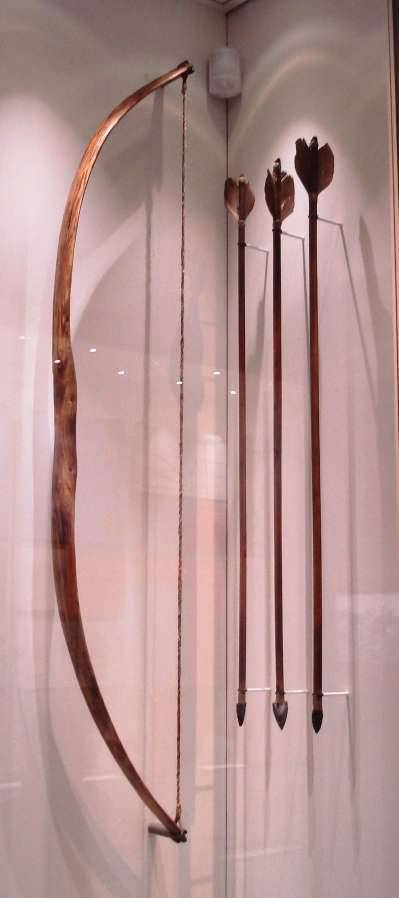
Wooden bow and arrows of the Ainu living in Hokkaido.
Here it is important to note those preferences that a given division of culture has over others, since some signs are naturally more significant than others. To begin with, we note: according to the latest finds of archaeologists, in Spain, bows and arrows were used already in the Paleolithic era. In the Sahara, images of hunters with bows and arrows belong to the era when the Sahara “blossomed”, and we see exactly such images on the rocks near Lake Onega and Altai, and in the Alps the famous Ottsi, a warrior and a copper-and-blacksmith century [xnumx]. That is, once a bow was common everywhere, it was used very widely, and the attitude towards it as arms for hunting and war, it was the same everywhere.
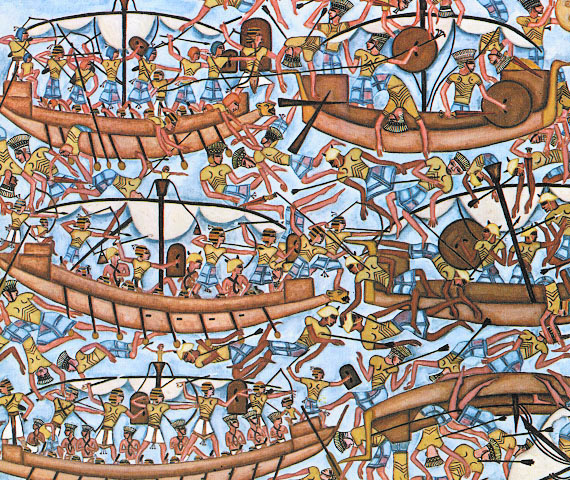
Relief from the burial temple of Ramses III in Medinet-Abu in Upper Egypt, depicting a sea battle with the "peoples of the sea." Modern processing in color. Please note that before you naval battle, but the warriors use only bow!
But then, somewhere in the region of Central Asia, something happened that caused some people, let's say, an ambiguous attitude towards the bow! The British historian T. Newark drew attention to this very important circumstance after others in his article “Why Knights Never Used Bows,” published in the Military Illustrated magazine in 1995 year. Today it is perhaps the most important issue related to the genesis of the defensive and offensive armament of cavalry warriors, as in the European part of Eurasia, and, consequently, all of its military culture and - this is unlikely to be an exaggeration - culture in general!
He notes that in the Middle Ages the most effective weapon was a bow and arrow, especially a composite bow, from which a horse was shot from the back. The greatest horse archers of the Middle Ages were, of course, the Huns, the Mongols and the Turks. Their names resurrect the terrible images of racing cavalry soldiers escaping from attack, imitating a retreat only to turn around in the saddles and lower the deadly hail of arrows from the bowstring. But, despite repeated defeats at the hands of these eastern hordes, the military effectiveness of such horse archers was never used by the military elite of Western Europe. Knights never used bows and arrows. Why?
“Throughout the Middle Ages, the knights believed that killing an enemy with an arrow from a bow was mean and did not do credit to a good warrior. The true knightly nobility goes to the winner in a one-on-one death fight with a spear, sword or mace. The use of bows and arrows was left for people below in their social status who could not fight as bravely or bravely as their gentlemen. That is why archers recruited peasants who could not buy a horse, even if their material well-being allowed them to do it; therefore, for the most part, European archers were on foot, and only social and cultural snobbery did not allow horse archers to become a characteristic part of the war in Europe.
When the West met with the East, in the fields of Western Europe or along the coast of the Holy Land, the Western knights still found themselves on equal footing with eastern horse archers, but only until they were torched until they used a bow. The principle of fair combat - one-on-one combat, an equal weapon - did not imply possession of a knight’s bow. It was the infidels who changed the laws of battle, so why did the knights remain at the same level? Apparently, defeat with dignity looked better than unfair victory. But the roots of this aristocratic prejudice do not lie in the knightly code of the Middle Ages, this was also observed in the ancient German military customs.
"Immortals" - the personal guard of King Darius. Frieze from the palace of Darius in Susa. Stored in the Louvre.
During the siege of Rome by the Ostgoths in 537, the Greek historian Procopius documented how vulnerable the German barbarians were to the horse archers. To break the siege, Bellisarius, a Byzantine-Roman commander, sent several hundred horsemen to wear down ready. They were given clear instructions - not to engage in a close battle with the Germans, to use only their bows. As ordered, the Byzantines avoided ferocious attacks ready, climbed the hill and showered enemy troops with a hail of arrows. As soon as the supply of arrows ended, they quickly hid behind the city walls, pursued by the angry barbarians. These raids proved so successful that Bellisarii used such tactics several times with heavy losses for the ready. If you believe the words of Procopius, and he was an indisputable witness to the siege of Rome, the losses were huge, and indicates that there were no horse-drawn archers, and the Byzantines had them. And this is not the only such case.
When the Goths were surrounded by the Byzantine commander Narses in 552, in the Apennina village Taginai, Procopius was again surprised that none of the barbarians had a bow. He explained this by saying that their leader ordered his soldiers not to use any weapons other than their copies for some mystical reason.
East Roman mosaic depicting the soldiers of the era of the sunset of the Empire. Pay attention to the very large shields that needed to be protected from the arrows of the Avars, the Slavs and the Arabs.
Whatever the reason, the German soldiers were killed by arrows of the Byzantine archers, both mounted and foot. But was such a catastrophic military policy widespread?
Archaeological and literary evidence asserts that horse archers were very rare in the German barbarian armies of Western and Central Europe. The cavalry retinue of the German "military lords" used only a sword and a spear, and the main part fought on foot with spears. Some of the barbarian warriors, in particular the Goths, lived in Eastern Europe for many centuries, but, despite close contact with horse archers of such peoples as the Huns and Sarmatians, they did not see the need to use the bow in themselves. The reason why the ancient Germans did not like the bow was the same as that of the knights. Archery was considered unfair!
Fanaticism, with which so denied the bow, was inherent in the whole of Germanic Europe. The Romans and Byzantines had no problems placing a large number of archers in their armies, whether they were foreign mercenaries or imperial troops - they all had a powerful composite bow. In the East, professional warriors considered it necessary and worthy of mastering horse archery masterfully. Beautifully decorated bows gave distinguished noble warriors. Eastern lords had a gilded bow as a sign of power. In the West, there were no decorated bows. A professional warrior rider or knight touched a bow only when he used it in hunting or in sport.
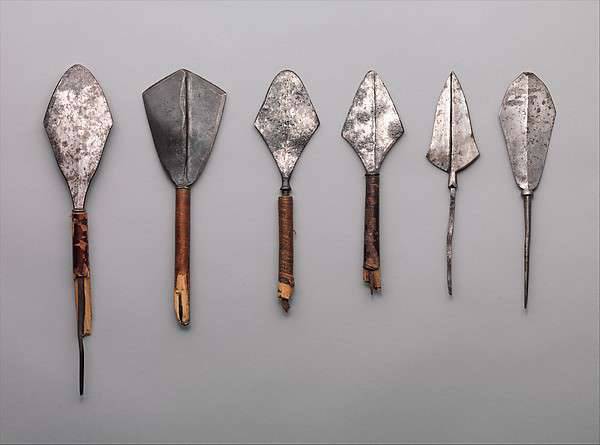
Arrowheads from the Metropolitan Museum in New York.
With the disappearance of the Mediterranean Roman Empire and the political rise of the German aristocracy, this fashion becomes widespread, despite all the Eastern lessons learned by the Romans and Byzantines. From this point of view, one thing is surprising: how did the Germans win a place under the sun at all? The answer to this question lies in the fact that the rapid attack in the melee wiped out any advantages of horse archers compared to the German riders. In addition to this strategy, economic and political factors, the triumph of the barbarians is not so difficult to understand. However, in the next thousand years, the inexplicable disgust of the Western horsemen to the bow cost them dearly in Spain and the Holy Land, where the Crusaders suffered greatly from lightning attacks of Saracen horse archers. When the Mongols conquered Europe, Western knighthood proved ineffective. Then only the death of the great Khan saved Europe from the subsequent accession to the Eastern Empire.
Very interesting tombstone, which we have in Russia in the courtyard of the archaeological museum in the city of Temryuk. The inscription under the relief reads: "Queen Dynamia (set the image) Matiana, (son) Zaydar, for the sake of memory." Probably, she herself also composed the text of this epitaph, and she herself also ordered that the tombstone be made to the head of the bodyguard detachment. Since Dynamia (60 BC - 12 BC) was the queen of the Kingdom of Bosporus, it is obvious that at that time her army had riders riding horses without stirrups, but using long spears and in addition, while not parting with the bows, which they kept in leather leather case with a low bowstring. (Author's photo)
(To be continued)
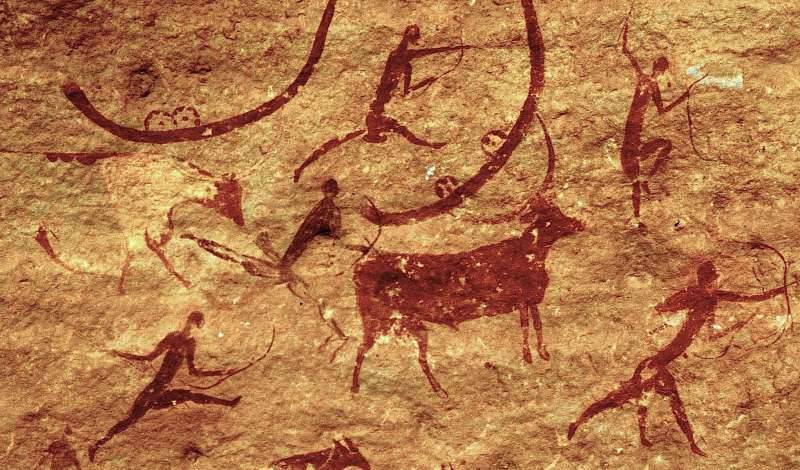
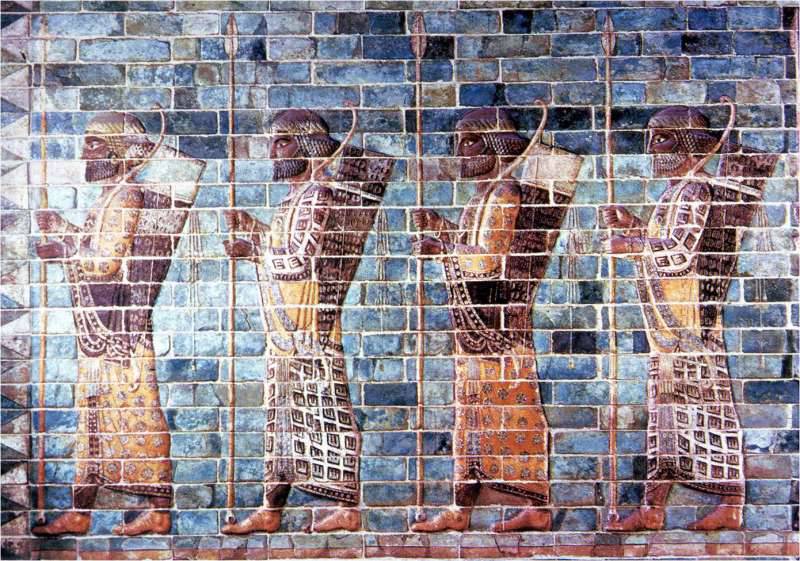
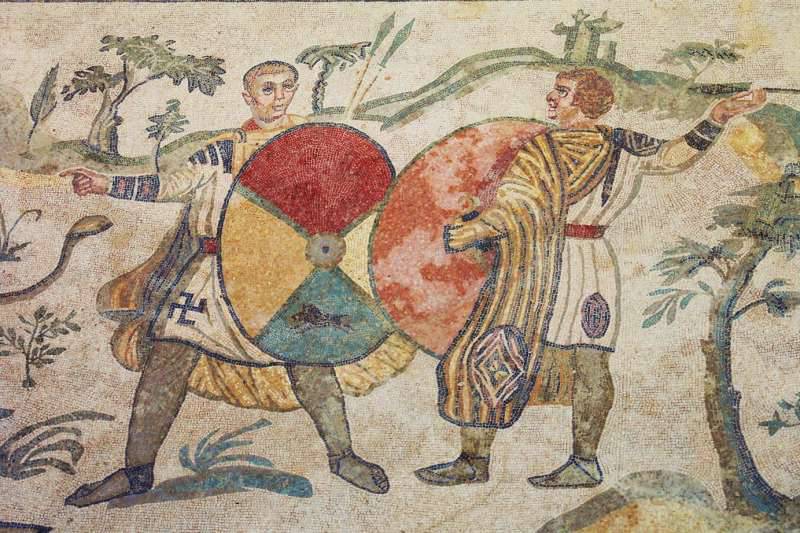
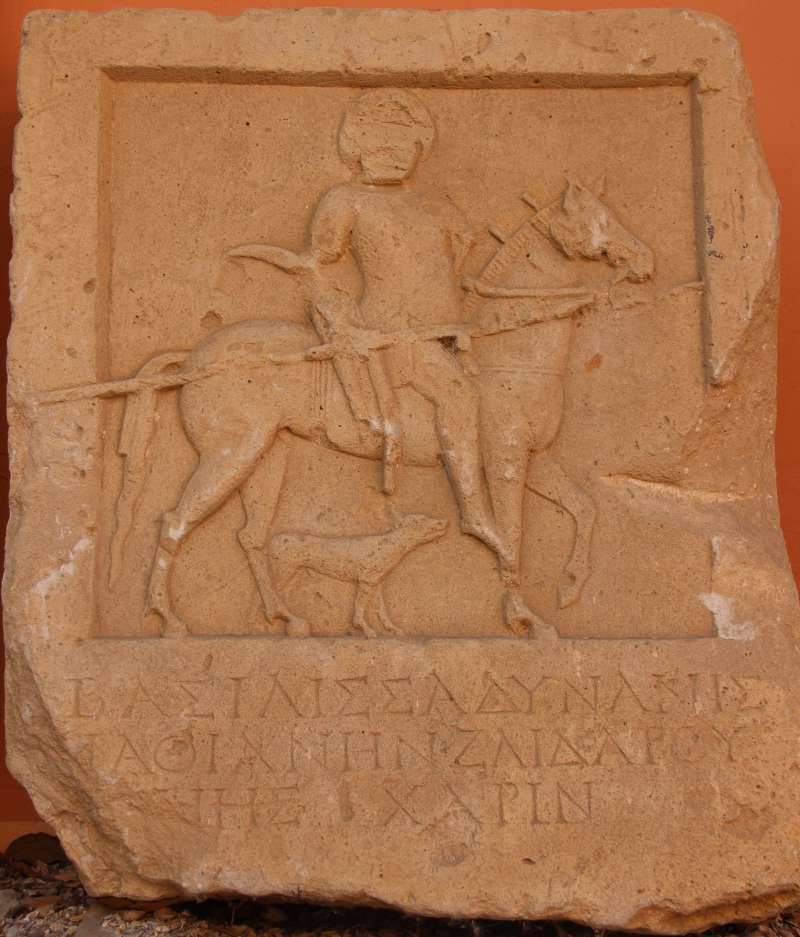
Information